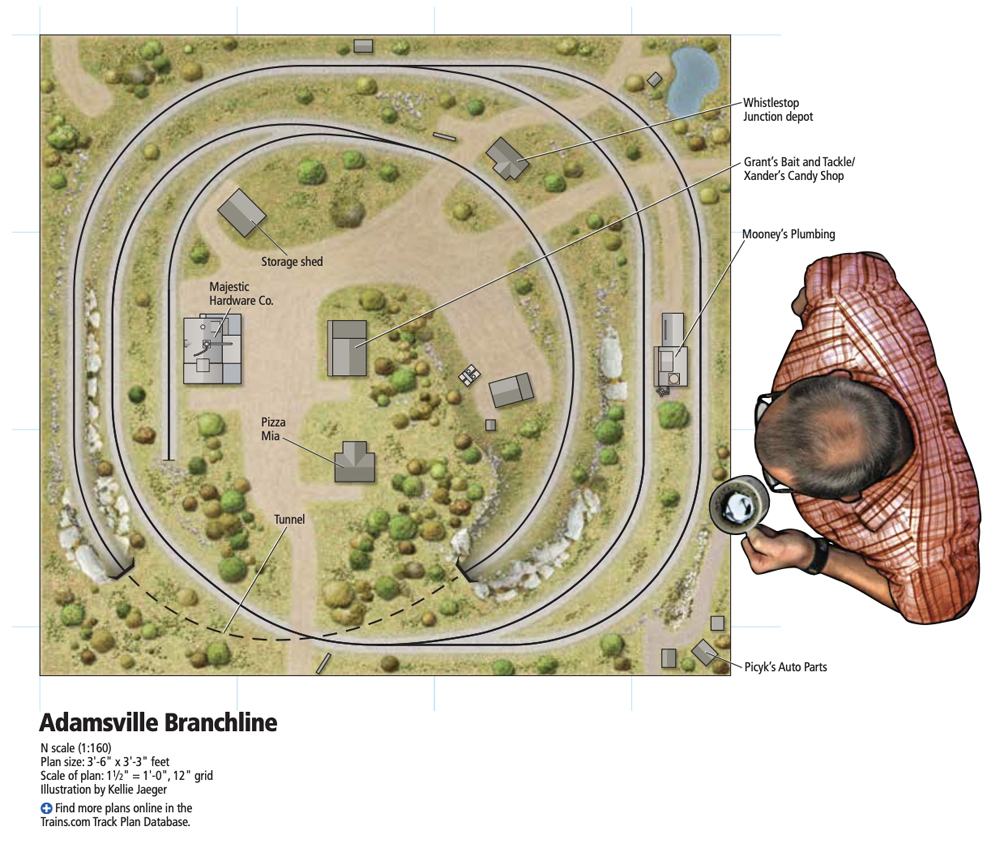
Facts & features Name: Adamsville Branchline Scale: N (1:160) Size: 3′-3″ x 3′-6″ Prototypes: Freelanced Locale: New England Era: Steam-to-diesel transition era Style: Island Mainline run: 13 feet Minimum radius: 9.5″ Minimum turnout: No. 4 Maximum grade: 2% Benchwork: 1 x 2 open grid Height: 8″ Roadbed: Cork Track: Atlas code 80 flextrack Scenery: Cardboard […]
Read More…
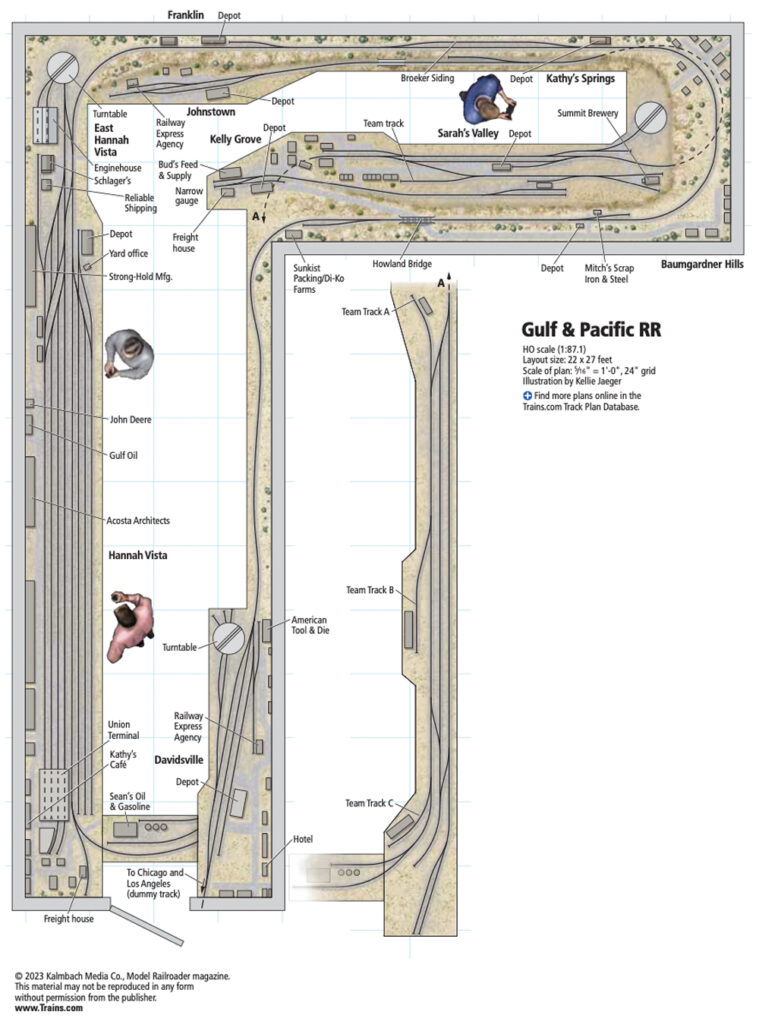
Facts & features Name: Gulf & Pacific RR Scale: HO (1:87) and HOn3 (HO scale, 3-foot narrow gauge) Size: 20 x 24 feet Prototypes: Freelanced Locale: Generic Era: Early 1960s Style: Shelf Mainline run: 180 feet Minimum radius: 30″ (main), 24″ (branch and spurs) Minimum turnout: No. 6 (main), No. 4 (branch and spurs) Maximum […]
Read More…
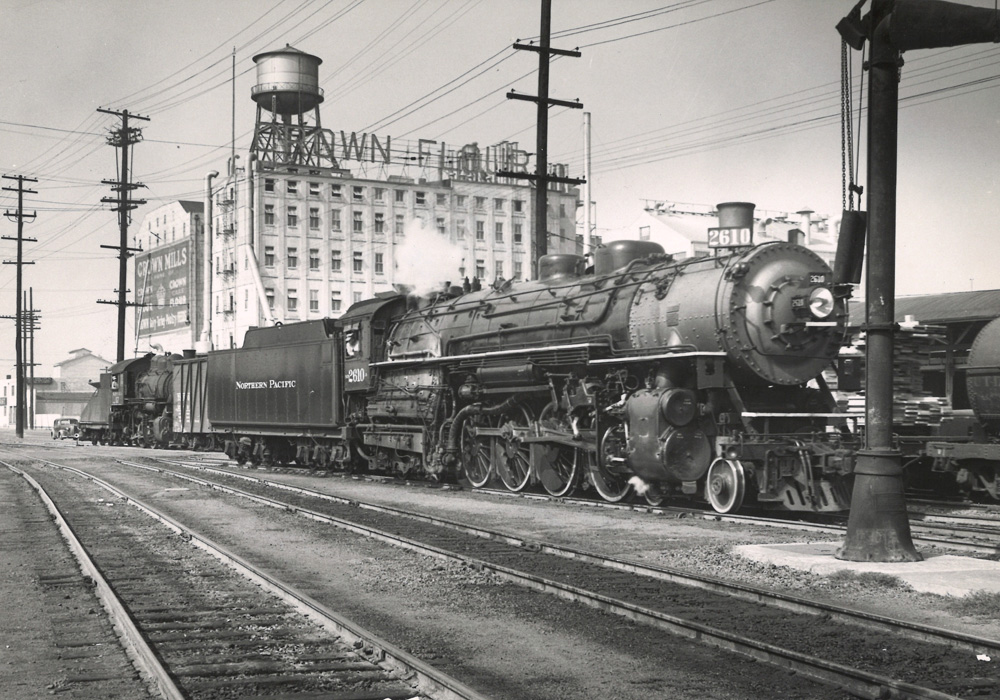
Q: I have a 5’-6” x 6’-0” HO scale layout modeling south-central Oregon in the years 1950 to 1979. I want to model the industries that I grew up around in that area – potatoes, wheat farming, cattle ranching, and logging. The members of the train club I’m in say that the railroads quit hauling […]
Read More…
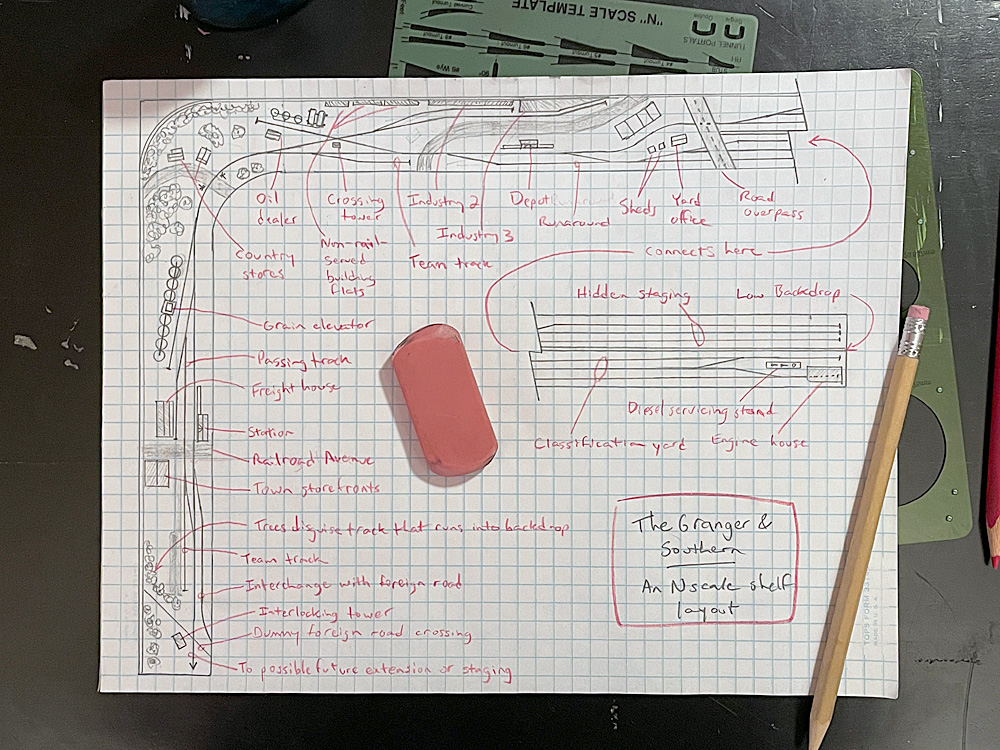
In some of my early “Sketching with Steve” articles – in particular, “What is a station?” and “Big industries for small spaces” – I admit to having an ulterior motive. I was building toward something. Specifically, I had been thinking for a while about building an L shaped N scale shelf layout in my basement office. […]
Read More…

What’s in my dream 4-by-8 model railroad? A yard, continuous operation, and lots of places to switch. Just because you don’t have a lot of room for your model railroad doesn’t necessarily mean you need to give up on your dream layout. You might just need to scale your dreams back a bit. While that […]
Read More…
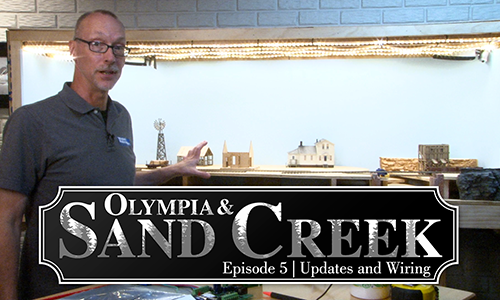
This time around, our intrepid host lets anxious viewers see all the progress he’s made to prepare the O scale (1:48) Olympia Logging Co. On30 layout for the next big step! From backdrop to tabletop to trackwork to scenery, David shares the extent of his off-camera efforts — all to get things into place for […]
Read More…

This time around, our intrepid host lets anxious viewers see all the progress he’s made to prepare the O scale (1:48) Olympia Logging Co. On30 layout for the next big step! From backdrop to tabletop to trackwork to scenery, David shares the extent of his off-camera efforts — all to get things into place for […]
Read More…
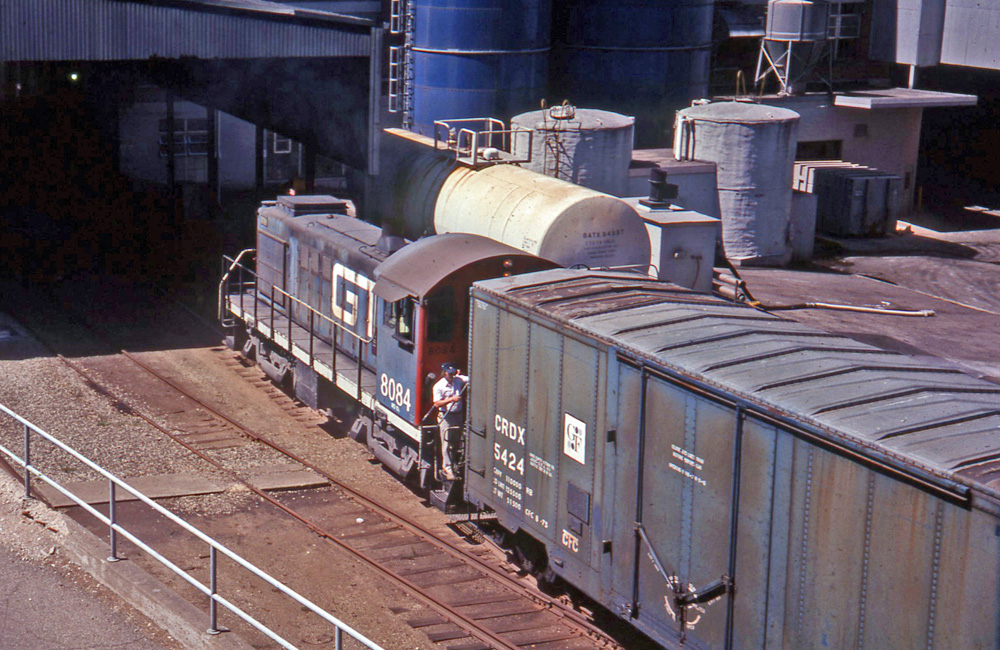
Q: Has Model Railroader ever done a feature on modeling a cereal plant such as Kellogg’s or Post? I’m building a 12″ by 10′-6″ shelf layout which will be entirely that one industry. But I’m not sure how best to lay out the various structures and car spots for covered hoppers, boxcars, food-grade tank cars, […]
Read More…
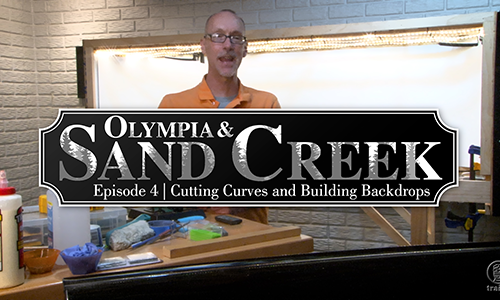
David has cleared the deck and marked his track configuration on the plywood, so he’s ready to cut things to pieces! No fears! In this video, he’ll show you how to make accurate measurements, so you can make equally precise cuts. Once those cut parts are assembled, David also shares how to install the styrene […]
Read More…

David has cleared the deck and marked his track configuration on the plywood, so he’s ready to cut things to pieces! No fears! In this video, he’ll show you how to make accurate measurements, so you can make equally precise cuts. Once those cut parts are assembled, David also shares how to install the styrene […]
Read More…
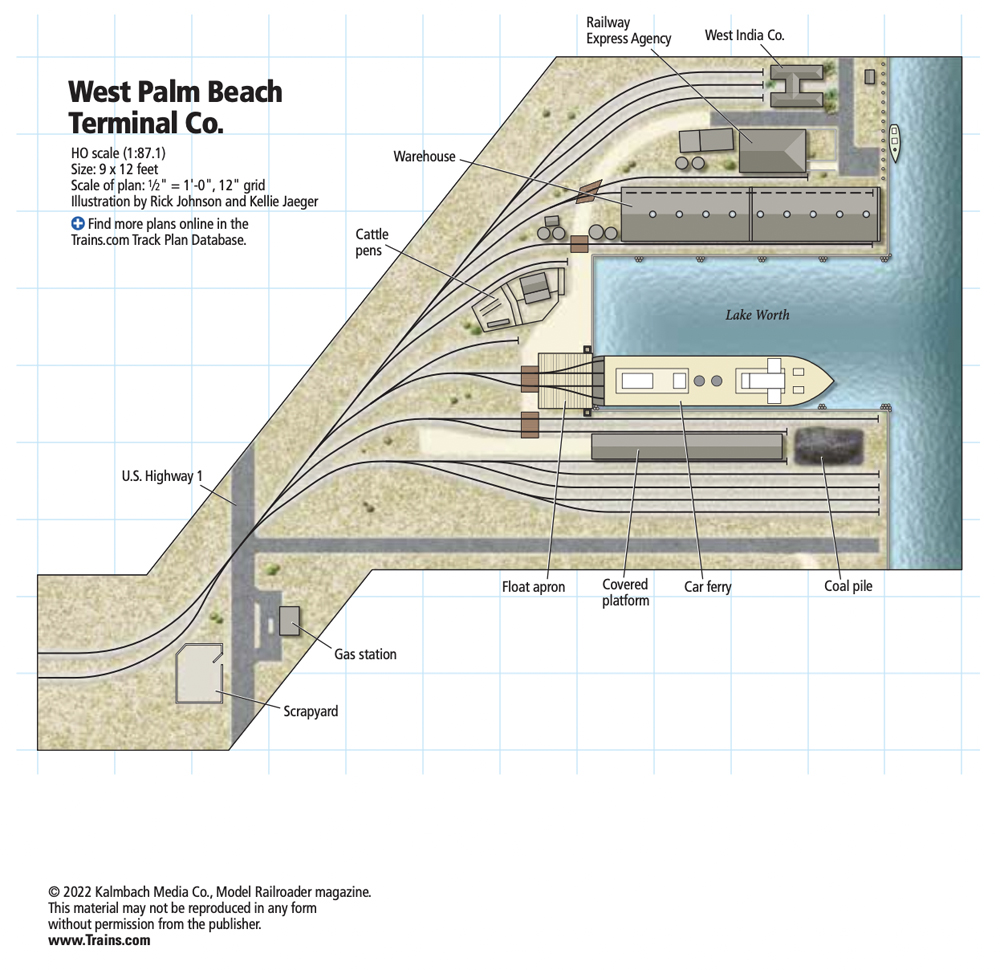
Facts & features Name: West Palm Beach Terminal Co. Scale: HO (1:87) Size: 9-0′ x 12-0′ Prototypes: West Palm Beach Terminal Co. Locale: East coast of Florida Era: Late 1950s Style: Module Mainline run: None Minimum radius: 1821″ Minimum turnout: no. 5 Maximum grade: None Benchwork: Hollow-core doors Height: 45″ Roadbed: Cork sheet Track: Micro engineering […]
Read More…
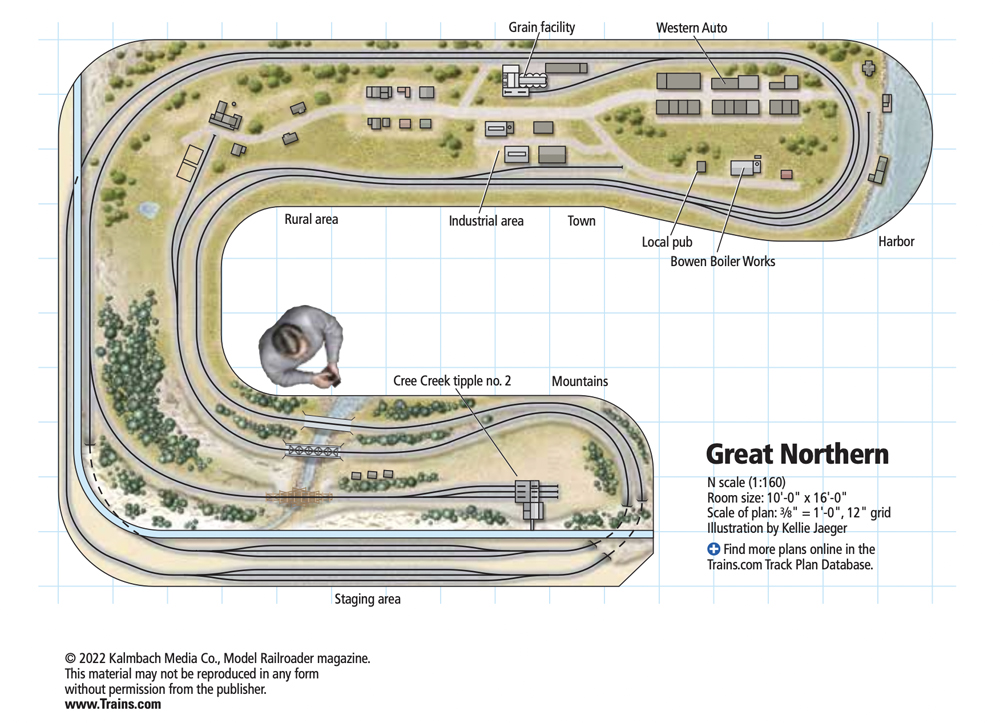
Facts & features Name: Great Northern Scale: N (1:160) Size: 10-0′ x 16-0′ Prototypes: Freelanced Locale: Pacific Northwest Era: Mid-1960s Style: Walk-in Mainline run: 86 feet Minimum radius: 15″ Minimum turnout: no. 6 Benchwork: Modified L-girder Height: 46″ Roadbed: Commercial foam roadbed Track: Micro Engineering code 55 (main), Peco code 80 (staging) Scenery: Extruded-foam insulation […]
Read More…










